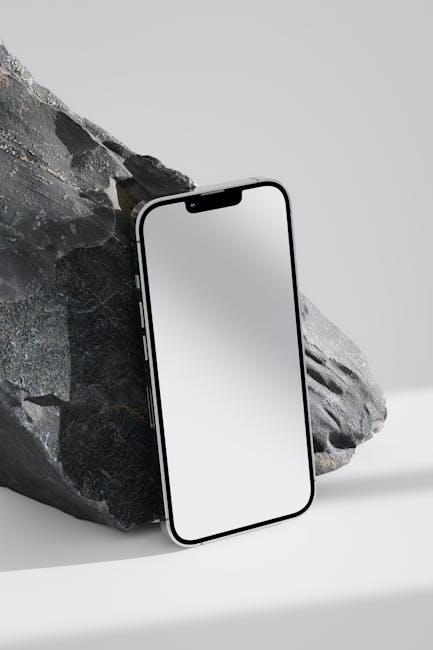
caption
Tech Review: The Future of Foldable Smartphones
The smartphone industry has always been at the forefront of technological innovation, and the emergence of foldable smartphones is no exception. These devices promise to revolutionize the way we interact with our phones, offering a unique blend of functionality and portability. In this tech review, we’ll delve into the future of foldable smartphones, examining their current state, potential advancements, and market trends.
The Evolution of Foldable Smartphones
Foldable smartphones have come a long way since their inception. The first commercially available foldable phone, the Royole FlexPai, was launched in 2018. Although it received mixed reviews, it paved the way for major players like Samsung, Huawei, and Motorola to enter the foldable market.
Key Milestones
Samsung Galaxy Fold: Released in 2019, this device marked Samsung’s entry into the foldable market. Despite initial issues with the screen, Samsung quickly addressed these problems and re-released the phone, setting a new standard for foldable devices.
Huawei Mate X: Also launched in 2019, the Mate X boasted an outward-folding design, differentiating it from Samsung’s inward-folding approach. This device showcased Huawei’s commitment to innovation and design.
Motorola Razr: A modern take on the iconic flip phone, the Motorola Razr brought a sense of nostalgia while incorporating cutting-edge technology. Released in 2020, it featured a flexible OLED display and a compact form factor.
Current State of Foldable Smartphones
Today, foldable smartphones are more refined and durable than ever before. Manufacturers have addressed many of the early issues, such as screen durability and hinge mechanisms. Let’s take a closer look at some of the top foldable smartphones currently available on the market:
Samsung Galaxy Z Fold 3
The Galaxy Z Fold 3 is Samsung’s latest flagship foldable phone. It features a 7.6-inch AMOLED display when unfolded and a 6.2-inch cover display for regular use. The device also boasts an under-display camera, S Pen support, and improved durability with Gorilla Glass Victus and an IPX8 water resistance rating.
Huawei Mate X2
Huawei’s Mate X2 offers a sleek and sophisticated design with an inward-folding mechanism. It features an 8-inch OLED main display and a 6.45-inch cover display. The device is powered by the Kirin 9000 chipset and offers impressive camera capabilities, making it a strong contender in the foldable market.
Microsoft Surface Duo 2
The Surface Duo 2 is Microsoft’s take on the foldable concept, featuring a dual-screen design with a 5.8-inch AMOLED display on each side. When unfolded, it provides an 8.3-inch combined display area. The device runs on Android and offers seamless integration with Microsoft Office and other productivity apps.
Future Advancements in Foldable Smartphones
The future of foldable smartphones is bright, with several exciting advancements on the horizon. Here are some key areas where we can expect to see improvements:
Display Technology
One of the most critical aspects of foldable smartphones is their display technology. Manufacturers are continually working to enhance the durability, flexibility, and resolution of foldable screens. Future foldable devices may feature micro-LED technology, which offers superior brightness, color accuracy, and energy efficiency compared to current OLED displays.
Hinge Mechanisms
The hinge mechanism is another crucial component of foldable smartphones. Future designs may incorporate more robust and flexible materials, reducing wear and tear over time. Additionally, new hinge designs could enable more diverse form factors, such as rollable or tri-fold devices.
Battery Life
Battery life is a common concern for all smartphones, and foldable devices are no exception. As battery technology advances, we can expect to see foldable smartphones with longer-lasting batteries and faster charging capabilities. Innovations like solid-state batteries and improved energy management systems will play a significant role in this area.
Market Trends and Consumer Adoption
The foldable smartphone market is still in its early stages, but it has shown significant growth potential. According to a report by Counterpoint Research, the global foldable smartphone market is expected to grow by 10x from 2020 to 2023, reaching an estimated 36 million units by 2023.
Price and Affordability
One of the primary barriers to widespread adoption of foldable smartphones is their high price. However, as production techniques improve and economies of scale come into play, we can expect prices to decrease. More affordable foldable phones will make this technology accessible to a broader audience, driving further market growth.
Consumer Preferences
Consumer preferences are also evolving, with more people seeking larger screens and enhanced multitasking capabilities. Foldable smartphones cater to these demands by offering a compact device that can transform into a tablet-sized screen. As more consumers experience the benefits of foldable phones, their popularity is likely to increase.
Innovative Use Cases
Foldable smartphones open up new possibilities for innovative use cases. For example, they can enhance productivity by allowing users to run multiple apps simultaneously on a larger screen. Additionally, foldable devices can provide a more immersive gaming and media consumption experience. As developers create apps and content optimized for foldable screens, the appeal of these devices will continue to grow.
Actionable Tips for Prospective Buyers
If you’re considering purchasing a foldable smartphone, here are some actionable tips to help you make an informed decision:
Research and Compare
Take the time to research and compare different foldable smartphones on the market. Pay attention to factors such as display quality, hinge durability, battery life, and overall performance. Reading reviews and watching video comparisons can provide valuable insights.
Consider Your Needs
Think about how you plan to use your foldable smartphone. If you prioritize multitasking and productivity, look for a device with a large, high-quality display and strong performance capabilities. If portability is more important, consider a more compact foldable phone like the Motorola Razr.
Check for Software Support
Ensure that the foldable smartphone you choose has robust software support, including regular updates and compatibility with essential apps. This will help you get the most out of your device and ensure a smooth user experience.
Evaluate the Warranty and After-Sales Service
Given the relatively new and complex nature of foldable smartphones, it’s essential to consider the warranty and after-sales service offered by the manufacturer. Look for devices with comprehensive warranties and reliable customer support to protect your investment.
Conclusion
The future of foldable smartphones is undoubtedly exciting, with numerous advancements and innovations on the horizon. As technology continues to evolve, we can expect foldable devices to become more durable, affordable, and versatile. Whether you’re an early adopter or a cautious buyer, foldable smartphones offer a glimpse into the future of mobile technology, promising to change the way we interact with our devices.
By staying informed about the latest developments and considering your specific needs, you can make a smart choice when it comes to purchasing a foldable smartphone. Embrace the future of mobile technology and experience the unique benefits that foldable smartphones have to offer.


